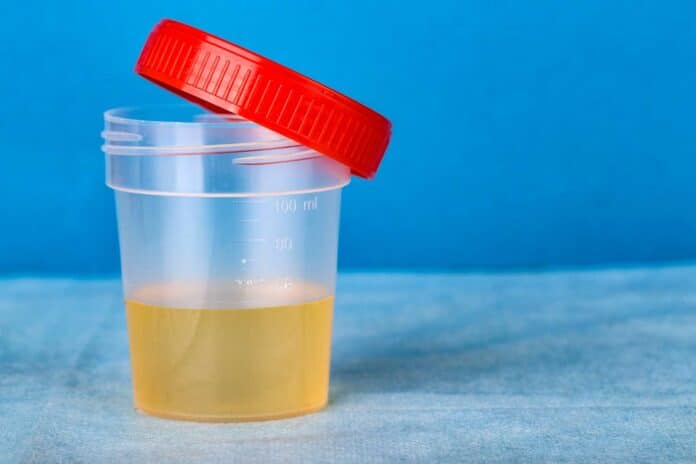The breakdown of byproducts of hemoglobin, like bilirubin, by humans and their gut microbiota is crucial for human health. Excessive serum bilirubin levels can lead to jaundice and neurological damage. However, the specific bacterial enzymes responsible for reducing bilirubin to urobilinogen, a critical step in this process, have just been identified.
Scientists at the University of Maryland and the National Institutes of Health have pinpointed the microbial enzyme responsible for the yellow color of urine. This enzyme, known as bilirubin reductase, has been identified, opening the door for additional research on the gut microbiome’s involvement in conditions such as jaundice and inflammatory bowel disease.
As red blood cells break down after their six-month lifespan, they produce a bright orange pigment called bilirubin. This byproduct is usually released into the gut for excretion but can be partially reabsorbed. If there’s an excess reabsorption, it can result in a buildup of bilirubin in the blood, leading to jaundice—a condition characterized by yellowing of the skin and eyes. In the gut, the resident flora can transform bilirubin into different molecules.
The study’s lead author, Brantley Hall, an assistant professor in the University of Maryland’s Department of Cell Biology and Molecular Genetics, said, “Gut microbes encode the enzyme bilirubin reductase that converts bilirubin into a colorless byproduct called urobilinogen. Urobilinogen then spontaneously degrades into a molecule called urobilin, responsible for the yellow color we are all familiar with.”
The connection between urobilin and the yellow color of urine has been established for a long time. Still, the research team’s recent discovery of the responsible enzyme finally answers a question that has puzzled scientists for over a century.
Beyond solving this scientific mystery, the findings could have significant health implications. Scientists noted that bilirubin reductase is present in almost all healthy adults but is frequently absent in newborns and individuals with inflammatory bowel disease. They suggest that the lack of bilirubin reductase may play a role in conditions like infant jaundice and the formation of pigmented gallstones.
Study co-author and NIH Investigator Xiaofang Jiang said, “Now that we’ve identified this enzyme, we can start investigating how the bacteria in our gut impact circulating bilirubin levels and related health conditions like jaundice. This discovery lays the foundation for understanding the gut-liver axis.”
Beyond jaundice and inflammatory bowel disease, the gut microbiome has been associated with various diseases and conditions, including allergies, arthritis, and psoriasis. The recent identification of the enzyme responsible for urine color adds another piece to the puzzle, bringing scientists closer to a comprehensive understanding of the gut microbiome’s impact on human health.
Hall said, “The multidisciplinary approach we were able to implement—thanks to the collaboration between our labs—was key to solving the physiological puzzle of why our urine appears yellow. It’s the culmination of many years of work by our team and highlights yet another reason why our gut microbiome is so vital to human health.”
Journal Reference:
- Hall, B., Levy, S., Dufault-Thompson, K. et al. BilR is a gut microbial enzyme that reduces bilirubin to urobilinogen. Nat Microbiol (2024). DOI: 10.1038/s41564-023-01549-x
